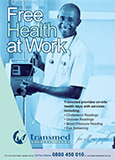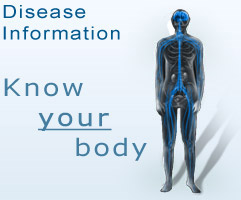Attention Deficit Hyperactivity Disorder (ADHD)
What is ADHD?
Attention deficit hyperactivity disorder (ADHD) is a medical condition that is characterised by inadequate attention span, high levels of activity and impulsiveness. It is often first recognised in early childhood. The symptoms affect a child's rationality, school performance, behaviour, emotions and social functioning. In 20% to 50% of cases the condition can continue into adulthood.
A very high percentage (up to 8% to 10% of children aged 4 to 17) may have ADHD. It is therefore one of the most common disorders of childhood. It occurs two to four times more commonly among boys than in girls.
Cause
The cause of ADHD is not clear. It is a medical disorder which may be related to the development of the nervous system.
Symptoms
ADHD is a condition that can cause three categories of symptoms: increased activity, impulsiveness (frequently doing irrational things without thinking) and a decreased ability to pay attention. Children with ADHD may have one or more of these symptoms. In most situations, the child has difficulty controlling his/her behaviour and cannot foresee the consequences of his/her actions. The behaviour is not wilful or aimed to annoy those around him/her.
These symptoms are usually seen by the time a child is four years old and typically increase over the next few years. The symptoms become worse when the child is seven to eight years old, after which the symptoms often begin to decline. By the time the child reaches adolescence, the hyperactive symptoms may be less noticeable, although ADHD can continue to be present. Symptoms of impulsivity frequently continue to be a problem throughout the life of the individual.
Hyperactivity - Hyperactive behaviour is defined as excessive fidgetiness, excessive talking, difficulty remaining seated when required to do so, difficulty playing quietly and frequent restlessness - the child seems to be always 'on the go'.
Impulsiveness - Impulsive behaviour almost always occurs with hyperactivity in younger children. It can cause difficulty waiting turns, blurting out answers too quickly, disrupting classroom behaviour, intruding on or interrupting the activities of others and may also lead to rejection by classmates or teachers or unintentional injury.
Inattention - Inattention may take many forms, including forgetfulness, being easily distracted, losing or misplacing things, disorganisation, underachievement in school, poor follow-through with assignments or tasks, poor concentration and poor attention to detail. These problems may become more obvious in school when the child is eight to nine years old and required to sit still.
Types of ADHD
There are three subtypes of ADHD:
- the inattentive type, previously known as attention deficit disorder;
- the predominantly hyperactive-impulsive type; and
- the combined type.
The type of ADHD is determined by identifying a child's predominant symptoms and can change over time.
Evaluation and diagnosis
Parents who are concerned their child may have ADHD should speak with the child's general practitioner, who may refer them to a child psychiatrist or child neurologist. Early recognition and treatment of ADHD are important to prevent or limit emotional, academic and behavioural difficulties. There is no simple test to diagnose ADHD.
Diagnostic measures
There are several important features of the disease, including the following:
- The symptoms must be present in more than one setting (e.g. school and home).
- The symptoms must persist for at least six months.
- The symptoms must be present before the age of seven.
- The symptoms must impair function in school, social, or work-related activities.
- The symptoms must be excessive for the age of the child.
- Other mental disorders that could account for the symptoms must be excluded.
There are a number of other medical and psychological conditions with symptoms similar to those of ADHD. A thorough medical, developmental, educational and psychosocial evaluation is necessary to confirm the diagnosis. Several consultations, occasionally with more than one doctor, may be necessary during the evaluation process.
Conditions that exist with ADHD
Other psychological and developmental disorders coexist in as many as one-half of children with ADHD. These can be difficult to distinguish from ADHD because there are frequently overlapping symptoms. The most common coexisting disorders include learning disabilities, disruptive behaviour disorders and mood disorders (anxiety, depression or bipolar disorder).
Treatment for these other disorders may include medication for ADHD and may also include medication for the coexisting disorder. Behavioural or psychosocial treatments may also be recommended. Care from a psychiatrist and a psychologist is sometimes needed.
Treatment
Effective treatment for ADHD includes medication, psychological treatment and sometimes educational interventions; these treatments may be used alone or in combination. Decisions about the choice of therapy are generally made by the doctor and parent after a discussion of the risks and benefits. Treatment can help those affected by ADHD to lead productive and satisfying lives.
1. Medication that may be used
Despite their name, stimulants do not cause a child with ADHD to become more stimulated, but instead improve communication between several areas of the brain. The most commonly used stimulants for the treatment of ADHD are:
1.1 Methylphenidate
Methylphenidate (Ritalin®, Concerta® and other generic and ethical formulations) is available in immediate and sustained release formulas. The medication comes in a variety of forms, including tablets, capsules and liquids, which can be taken orally. The immediate release form of treatment usually starts with one dose per day and is then increased to two doses daily. The sustained release formula is usually taken once per day.
Effectiveness - At least 80% of children will respond to a stimulant, although it often takes time to find the appropriate dose for the child. It may be necessary to try more than one medication to find the one that is most effective with the fewest side-effects. Typically only one stimulant is used at a time.
Stimulants improve parent and teacher ratings of hyperactive behaviour in children with ADHD.
Side-effects - Stimulants have a 50-year history of being safe and effective when used properly and there is a low incidence of serious side-effects. Stimulants are not addictive. Methylphenidate and amphetamines are equally likely to cause side-effects. Some of the most common include:
- decreased appetite (80%);
- sleep disturbances (3% to 85%);
- weight loss (10% to 15%); and
- motor tics, i.e. sudden, involuntary movements (15% to 30%).
Less common side-effects include increased heart rate and blood pressure, headaches, social withdrawal, nervousness, irritability, stomach pain and rebound irritability or moodiness.
Many of these side-effects are mild, temporary and reversible with adjustments to the dose or time the stimulant is taken.
Cardiovascular effects - Stimulants are not recommended for children with heart abnormalities or other serious heart problems.
Psychiatric effects - There have been a small number of reports of children who take stimulants developing suicidal thinking, hallucinations or increased aggression. Parents and others who interact with the child are advised to closely monitor their child for the first four to five months of treatment, as well as when the dose is increased or decreased.
1.2 Atomoxetine (Strattera®):
Atomoxetine is a non-stimulant used in the treatment of ADHD. Atomoxetine is an alternative to stimulants that may be more appropriate for patients with a history of drug abuse or who have family members with a history of drug abuse. It can also be used if a child has intolerable side-effects from stimulants.
It is usually taken once or twice per day and is available only in capsule form. Capsules should not be opened or chewed. Drug holidays, i.e. when medication is not taken on the weekend or during school vacations, are not recommended with atomoxetine.
Effectiveness - In clinical studies, atomoxetine was as effective or less effective compared to methylphenidate. It is usually given if the side-effects of methylphenidate are too severe or if methylphenidate is potentially harmful to use.
Dosage - Take medicine as prescribed and discuss changes in doses with the doctor who treats the condition. There are several ways in which the taking of medication can be made practical. Discuss this with your doctor.
Drug holidays - The use of a 'drug holiday', i.e. when medication is not taken on the weekend or during school vacations, should be discussed with the child's doctor.
Discontinuing the use of stimulants - The duration of stimulant use depends on the child's situation. The decision to change or stop medication should only be made after a discussion of the risks and benefits with the child's doctor.
2. Behavioural treatment
Behavioural treatment is defined as changes in a child's environment that are designed to help him/her change his/her behaviour. This type of treatment may be recommended for children with ADHD. Behavioural treatment addresses specific behavioural problems that accompany inattention, hyperactivity and impulsiveness. The way that behavioural problems are addressed can affect the treatment's long-term outcome.
Behavioural treatment addresses difficulties with problems learning at school, forging relationships with friends, parents, and other family members and following through with requests from adults.
Adults can help to shape the behaviour of a child who has ADHD with the following techniques:
- maintain a daily schedule;
- keep distractions to a minimum;
- provide specific and logical places for the child to keep his schoolwork, toys and clothes;
- set small, reachable and clear goals;
- reward positive behaviour (a sticker chart with a bigger reward for a predetermined number of stickers);
- use charts and checklists to help the child stay 'on task';
- suggest physical activity breaks during tasks that require sustained attention;
- limit choices;
- find activities in which the child can be successful (e.g. hobbies and sports); and
- use calm discipline (e.g. time out, distractions or removing the child from the situation).
Complementary and alternative medicine
The benefits of the treatment has not been shown in controlled studies and the risks are not well understood. One significant risk is that of failure and setback for a child when symptoms of ADHD continue.
Click here for more information about living with ADHD.
References
1. UpToDate: Patient information (public domain) updated: June 10
2. Qualsa guideline for ADHD
3. Qualsa Medicine Policy for ADHD
 TransmedBanner4.jpg)

